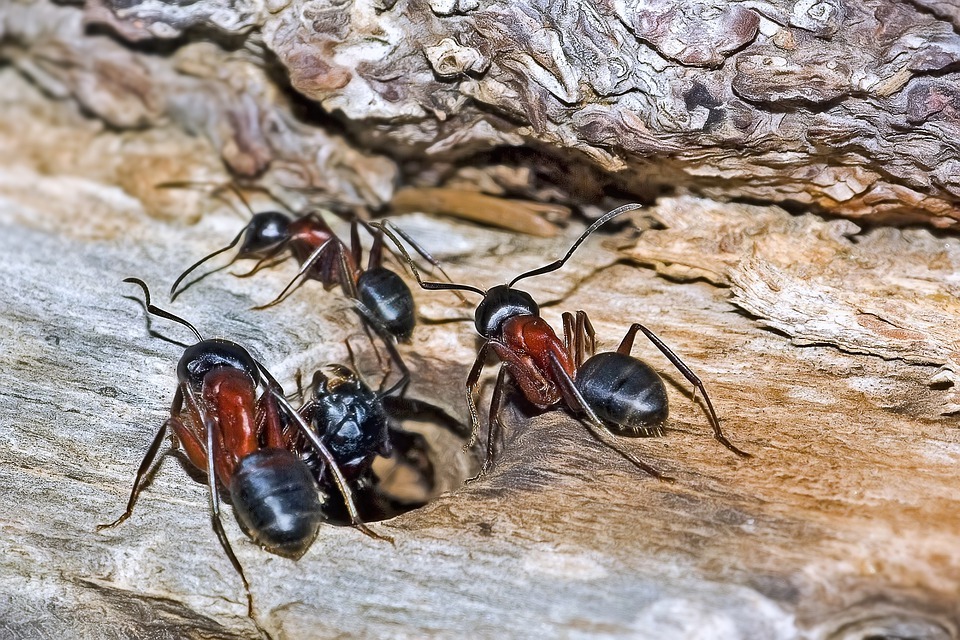
Image Source atpmspest.com.au
Welcome to our comprehensive guide on the potentially dangerous nature of carpenter ants. With their ability to cause significant structural damage and potential health risks, it is crucial to understand the threats these insects pose. In this article, we will delve into their behavior, anatomy, various species, and the potential dangers they present. By the end, you’ll have a better understanding of the risks associated with carpenter ants and how to mitigate them effectively.
The Intriguing Behavior of Carpenter Ants
When it comes to insect behavior, carpenter ants have a captivating way of communicating and organizing their colonies. These social insects display a high level of activity, constantly foraging for food and building extensive tunnel systems within wooden structures. By exploring the fascinating behavior patterns exhibited by carpenter ants, we can gain valuable insight into their potential hazards.
Anatomy and Ecology
Before diving into their behavior, it is essential to understand the physical characteristics that set carpenter ants apart. From their strong mandibles to their distinct body parts, each component plays a vital role in the survival and expansion of their colonies. By examining their anatomy, we can better comprehend how they interact with their environment and the potential dangers they pose to human structures.
Carpenter Ant Species: Identifying the Threats
With over a thousand known species worldwide, it’s important to distinguish between different types of carpenter ants in terms of their habits and potential risks. Some species prefer decaying wood, while others target sound lumber. By familiarizing ourselves with the specific carpenter ant species prevalent in certain regions, we can tailor our prevention and control efforts accordingly.
Assessing the Potential Dangers
Carpenter ants pose various risks, ranging from structural damage to potential health hazards. It is crucial to be aware of the implications these threats can have on both residential and commercial properties. By understanding the potential dangers associated with carpenter ants, we can take proactive measures to protect our homes and ensure the well-being of our families.
Structural Damage: Undermining Your Property
One of the most significant dangers of carpenter ants lies in their ability to damage wooden structures. From weakened foundations to compromised load-bearing walls, these insects can cause extensive harm if left unchecked. By excavating tunnels and galleries, carpenter ants compromise the structural integrity of buildings, posing a direct threat to their occupants.
Health Risks: Allergies and Contamination
Besides the structural damage they can cause, carpenter ants also pose potential health risks to humans. These insects are known to contaminate food sources, leading to the spread of bacteria and pathogens. Additionally, some individuals may experience allergic reactions when coming into contact with carpenter ant bites or their shed body parts. Understanding these health risks is essential for ensuring a safe living environment.
Table Breakdown: The Hazards of Carpenter Ants
| Threat | Description |
|---|---|
| Structural Damage | Carpenter ants can undermine the stability of wooden structures. |
| Health Risks | Contamination of food sources and potential allergic reactions. |
| Economic Impact | Costly repairs and decreased property value. |
| Environmental Impact | Disruption of ecosystems and damage to trees. |
Frequently Asked Questions about Carpenter Ants and Their Dangers
Q: Can carpenter ants cause structural damage to my home?
A: Yes, carpenter ants excavate tunnels and galleries in wood, potentially compromising the structural integrity of your home.
Q: Are carpenter ants harmful to humans?
A: While carpenter ants don’t generally bite or sting humans, they can contaminate food sources, leading to potential health risks.
Q: How can I identify a carpenter ant infestation?
A: Look for signs such as wood shavings, rustling noises inside walls, or visible ants with a large size discrepancy (workers vs. reproductive ants).
Q: How can I prevent carpenter ants from infesting my home?
A: Practice good sanitation, eliminate moisture sources, seal entry points, and keep woodpiles away from your property to minimize the chances of an infestation.
Q: Should I attempt to control carpenter ants on my own?
A: It is recommended to seek professional pest control services to effectively eliminate carpenter ant colonies and prevent further infestations.
In Conclusion
Understanding the potential dangers of carpenter ants is crucial for protecting your home and the well-being of your family. By recognizing their behavior, anatomy, and the risks they pose, you can take proactive measures to prevent infestations and minimize the potential damage. Remember to seek professional assistance when dealing with carpenter ant problems to ensure thorough elimination and long-term prevention.